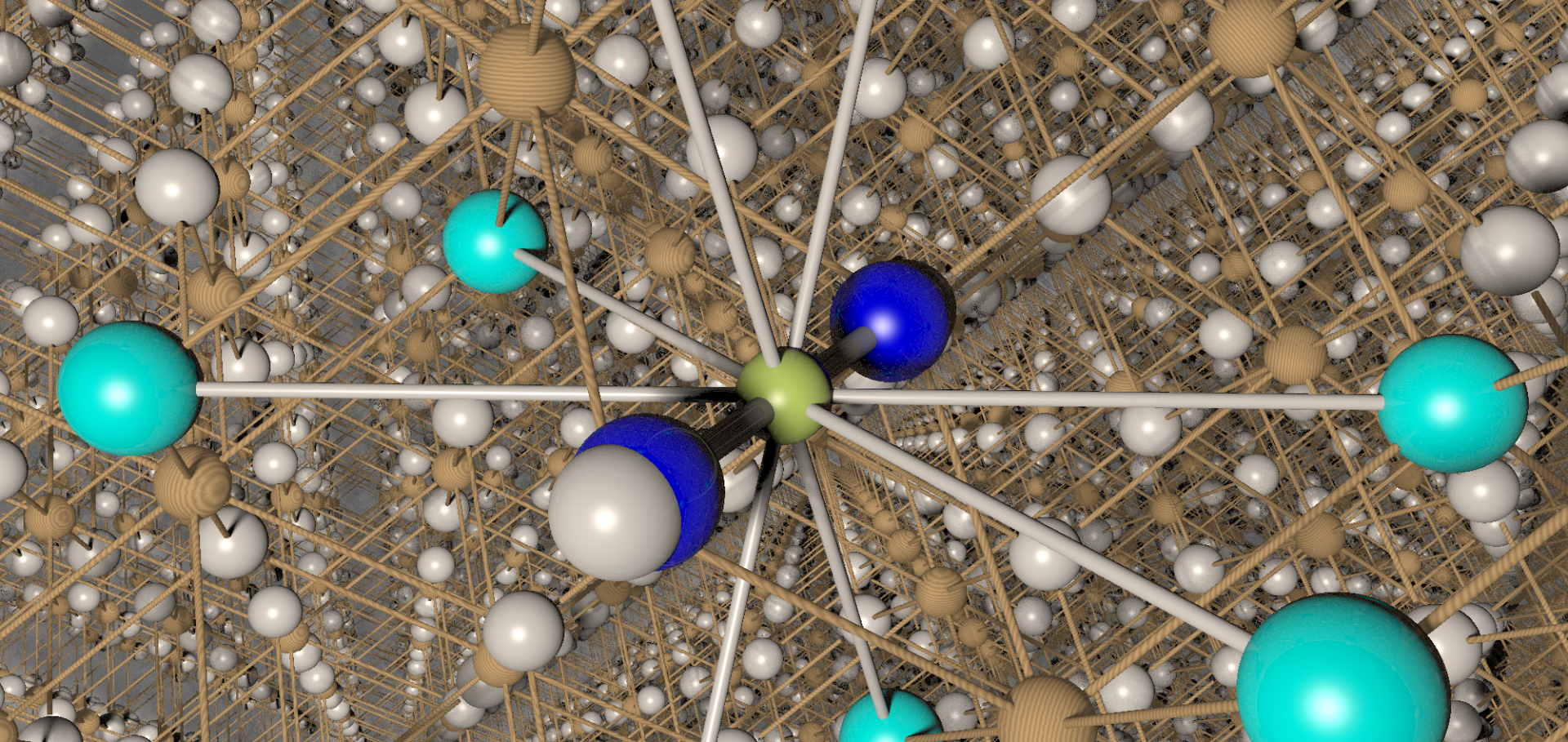Quasi-persistent currents in the high field phase of α-(BEDT-TTF)2 TlHg(SCN)4 : evidence for quantum Hall effect
Synthetic Metals 86:1 -3 pt 3 (1997) 1979-1980
Abstract:
Magnetisation measurements performed on the charge-transfer salt α-(BEDT-TTF)2TlHg(SCN)4 in pulsed magnetic fields reveal the existence of eddy current 'resonances' in the high field state, indicating the presence of deep minima in the transverse magnetoresistivity (or ideal conducting phases). Their behavior can be explained qualitatively in terms of enhanced conductivity due to the quantum Hall effect, which becomes possible even when quasi-one-dimensional carriers are present.Temperature dependence of the angle-dependent magnetoresistance oscillations in α-(BEDT-TTF)2 KHg(SCN)4
Synthetic Metals 86:1 -3 pt 3 (1997) 2055-2056
Abstract:
Angle dependent magnetoresistance oscillations (AMRO) have been studied for the charge-transfer salt α-(BEDT-TTF)2KHg(SCN)4. This material possesses a spin-density-wave (SDW) groundstate exhibiting AMRO with pronounced minima attributable to quasi-one-dimensional (QID) sections of Fermi surface (FS). Increasing the temperature or the magnetic field produces a change in the AMRO with the strong minima disappearing while pronounced peaks simultaneously evolve. These maxima are ascribable to a Q2D FS pocket. The change in form of the AMRO is thus associated with a reordering of the FS. This is brought about by removal of the SDW state causing reversion of the FS to the form close to that predicted by bandstructure calculations. The phase boundary between these two regimes has been tracked using AMRO from the high temperature limit to the high field limit for the first time and the shape of the Q2D sections of FS derived.Magnetoconductance of 60% PANI-CSA films
SYNTHETIC MET 84:1-3 (1997) 817-818
Abstract:
We report magnetoconductance measurements on two metallic 60 % PANI-CSA films at fields of up to 15 Tesla. Our results are generally consistent with measurements on other conducting PANI-CSA samples reported by Menon et. al.(1) at lower magnetic fields. However, there are some deviations at low temperatures and high magnetic fields which suggest the need for further detailed investigation.Muon studies of spin dynamics in polyaniline
SYNTHETIC MET 84:1-3 (1997) 943-944
Abstract:
The muon is a valuable probe of spin excitations in polymers, as the muon implantation process itself generates a lest excitation whose dynamical properties can be studied via the evolution of the muon spin polarisation. We report here studies on undoped polyaniline in its emeraldine base form (PANI:EB). Characteristic field dependences and cutoff frequencies for the muon spin relaxation are observed which are related to the spin diffusion. One-dimensional diffusion is seen at low temperatures and at short probe times. The on chain diffusion is observed to have a weak metallic temperature dependence whereas the interchain diffusion is strongly activated and phenyl ring rotations are seen to have an important effect on the diffusion processes.Crystal chemistry and electronic properties of the N=2 Ruddlesden-Popper manganates: Unconventional CMR materials
MATER RES SOC SYMP P 453 (1997) 331-336


